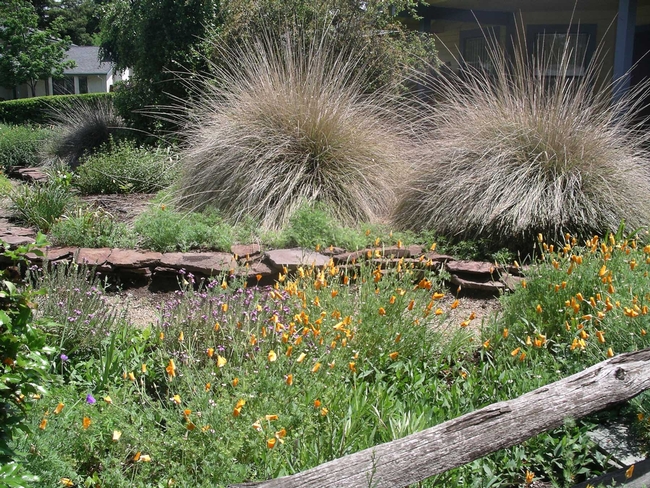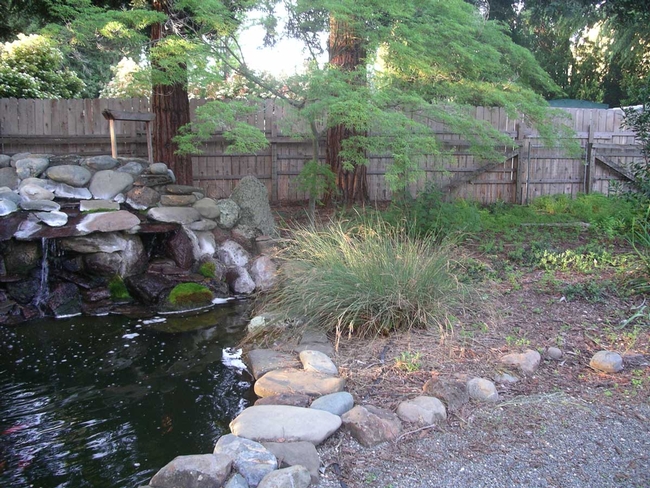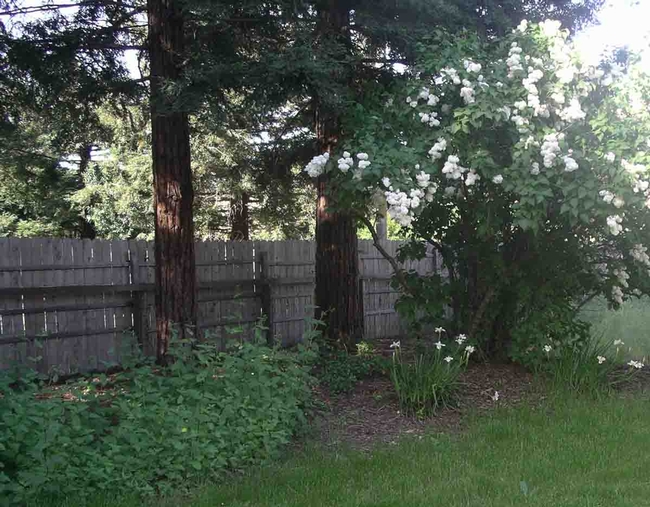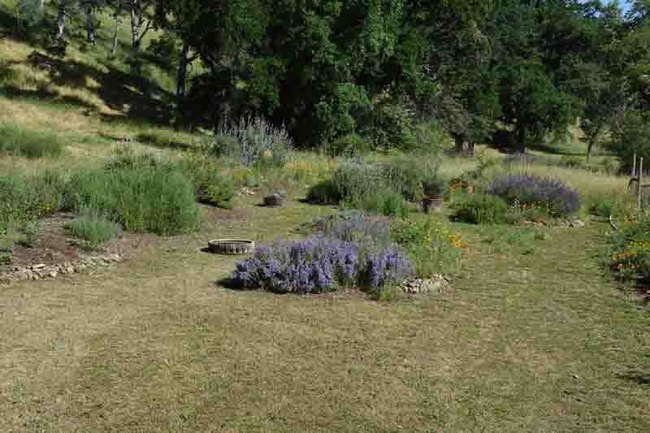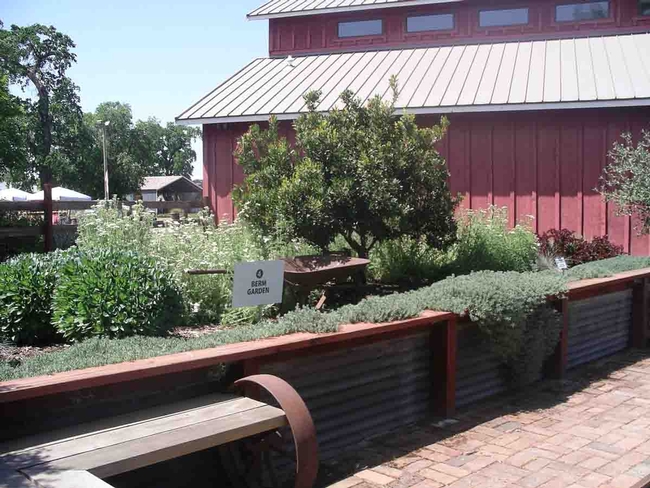Landscaping berms are mounded hills of soil that can serve multiple functional and aesthetic purposes in the garden. A berm can be placed to block or change the flow of water across the property. It can prevent water from draining back toward a house foundation or prevent water from puddling in the wrong place. In an area of heavy soil, a berm can improve drainage to accommodate plants that require faster-draining soil. A berm can also improve an area of poor soil. Berms can be used to form “islands” of landscaped areas within larger and mostly un-landscaped areas.
Berm with flat flagstone wall. Cindy Weiner
Building a berm in your yard is a good do-it-yourself project, as long as you keep the berm to a manageable size. First, decide where you want to place the berm, taking into account how it might affect the movement of water across the space. Then determine the size and shape you want for the berm. An asymmetrical shape is generally more pleasing than a circular one. A good rule of thumb is to make the berm about four to six times longer than it is wide. A kidney shape works well for a berm at a corner of the yard. The berm should not be more than 18 to 24 inches tall, as a higher berm might be subject to erosion. Use a garden hose to lay out the size and shape of the berm. Make larger curves rather than tight turns.
A shallow berm edged by a waterfall rises to a Japanese maple. by Cindy Weiner
A meadow of native sedge adjoins a shallow berm with mixed planting of native and non-native perennials and shrubs. Cindy Weiner
If the berm isn't very tall and the slope is gradual, edging usually isn't necessary. If the berm is taller or has a steep slope, you may need a retaining wall to help keep the berm in place. A short wall of flagstones, dry stacked three to four deep, is all that's required. Or you may want to use stones or bricks to separate the berm from the surrounding area, even if they aren't necessary. On the other hand, you might prefer a more natural transition from ground level to the berm.
Once you have constructed the berm, it's time to add plants. Put taller plants at the back, especially if you are trying to create privacy or screen an undesirable view. Shorter plants work best on top and down the sides. Let trailing plants spill over rocks or trail downhill. Ornamental grasses work very well in a berm as their long roots can resist erosion and help hold soil in place. Select plants that look natural together: for example, cactus would look out of place planted next to a rose bush. Research the size of plants at maturity so you leave enough space between plants for them to grow without crowding each other.
Pollinator gardens in small berms provide interest in otherwise non-landscaped area. John Whittlesey
Get inspiration for your berm garden design from the two berm gardens at the Master Gardeners Demonstration Gardens at Patrick Ranch (10381 Midway, Durham). The Berm Garden is just east of the Visitor Center. It has a retaining wall about three feet tall surrounding most of the garden, with the soil sloping to ground level on the open side. The Native Plant Garden is mulched with red lava fines (particles), against which the colors of the native plants “pop” when they are in bloom. The Demonstrations Gardens are free and open to the public on Saturdays and Sundays from 11am to 3pm.
Berm garden in the Master Gardener Demonstration Gardens. Cindy Weiner
